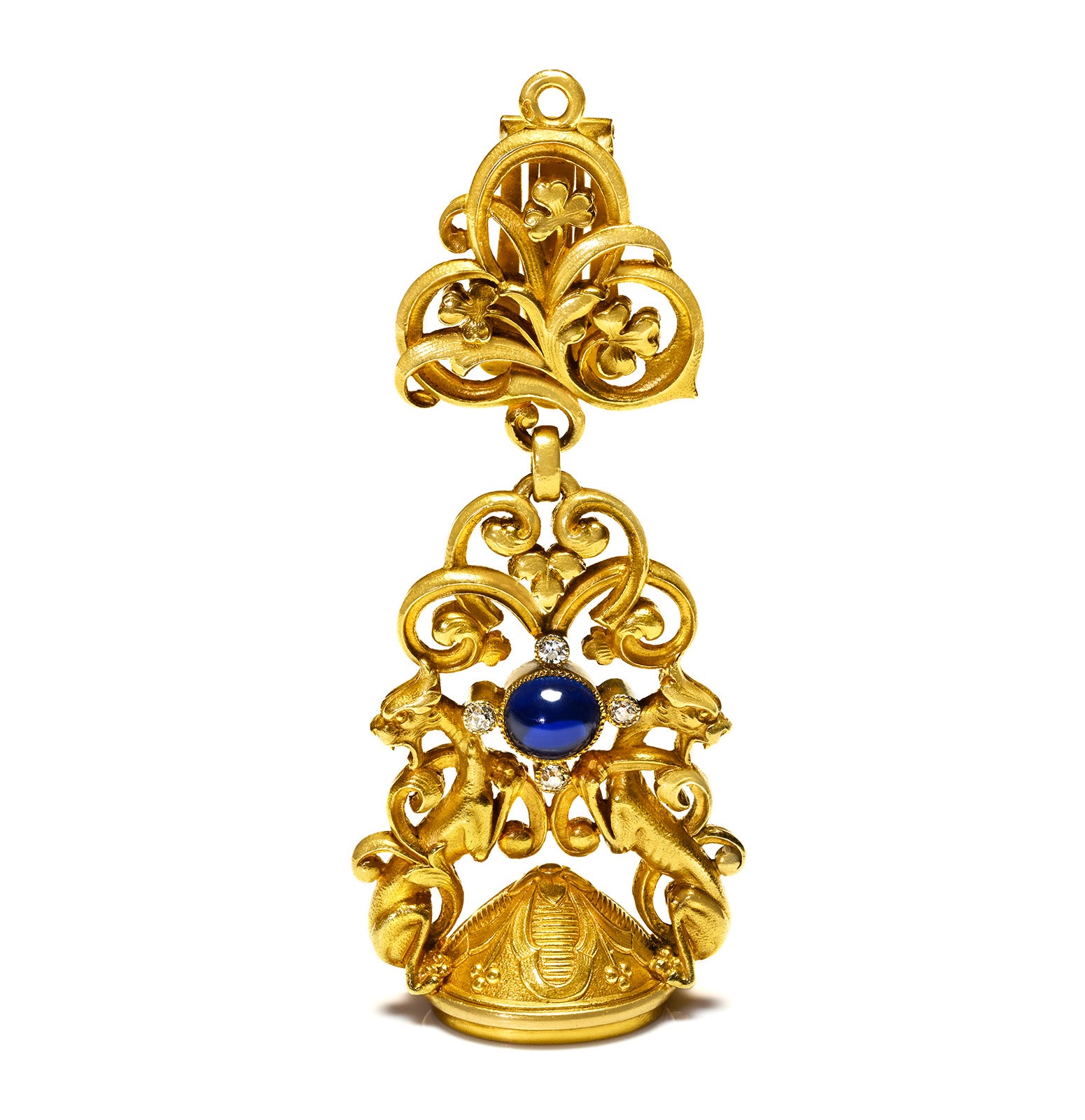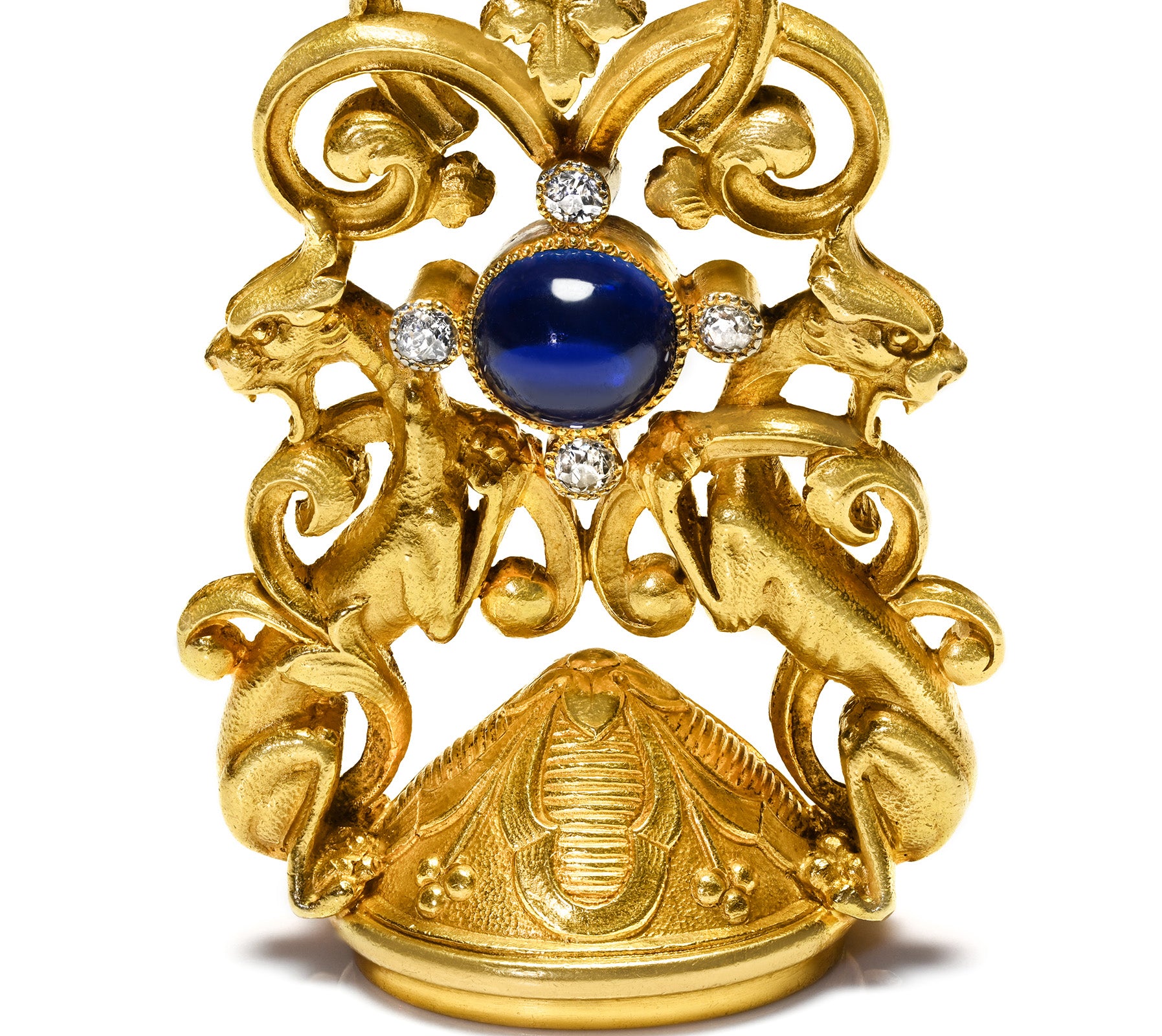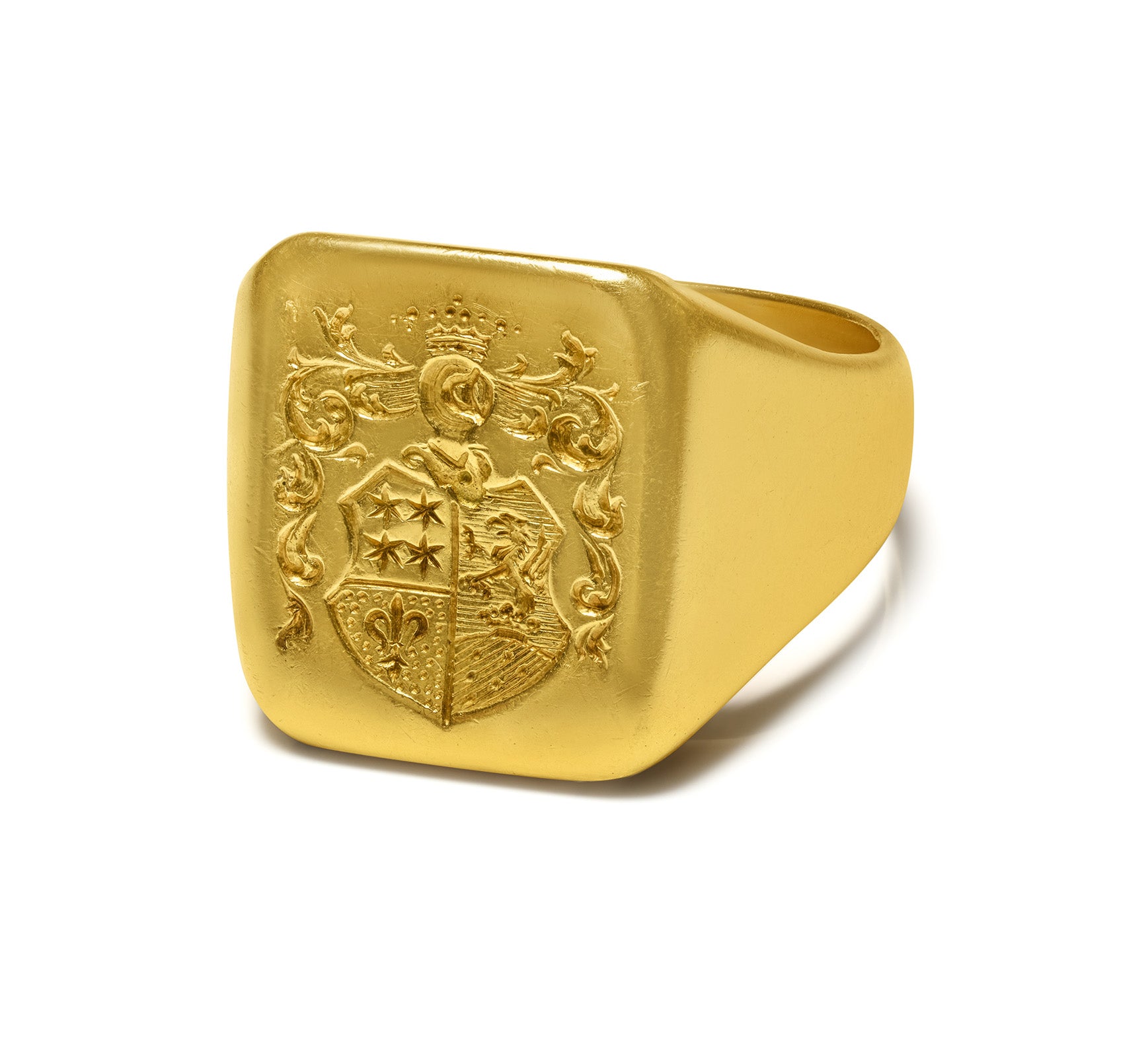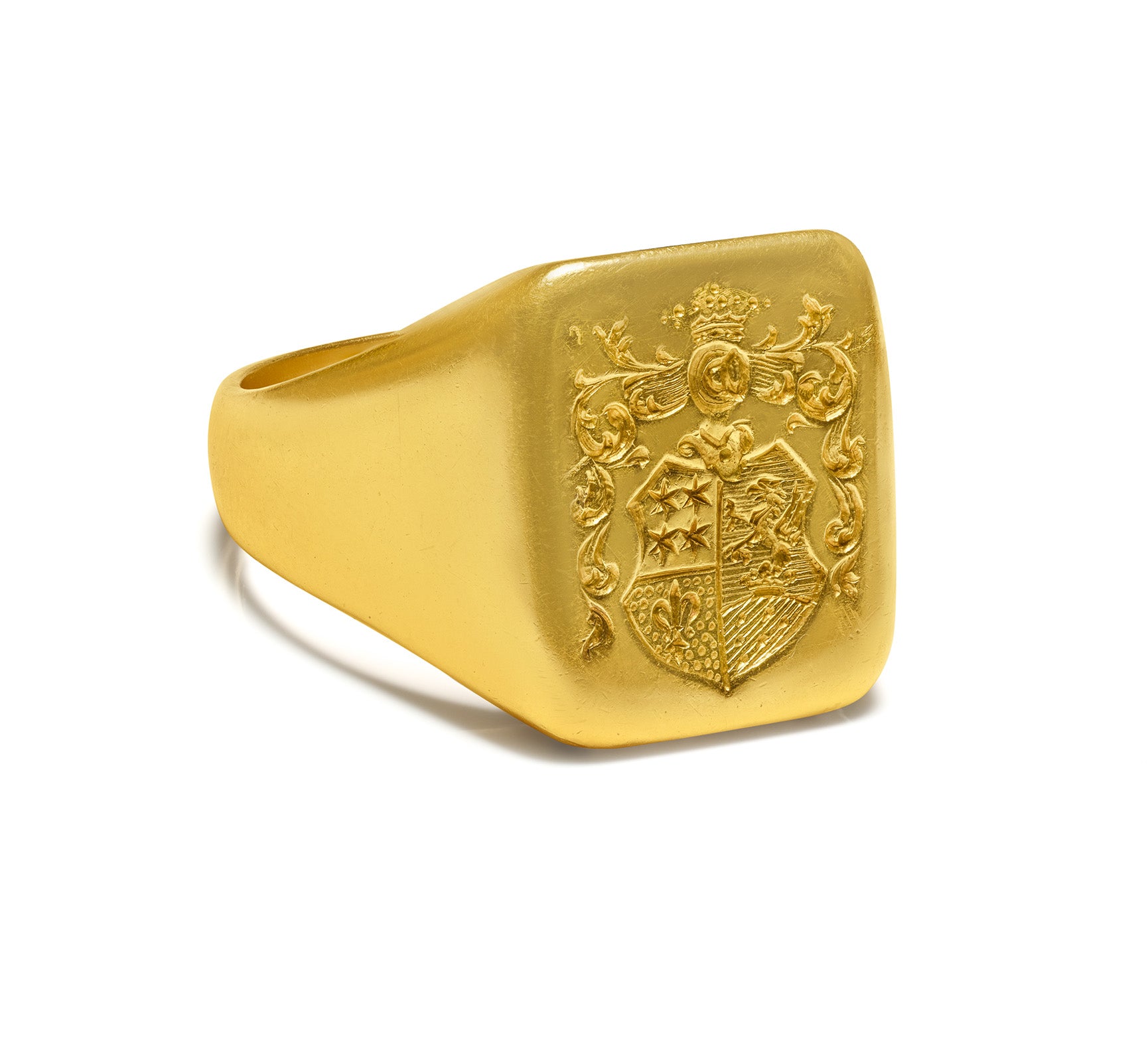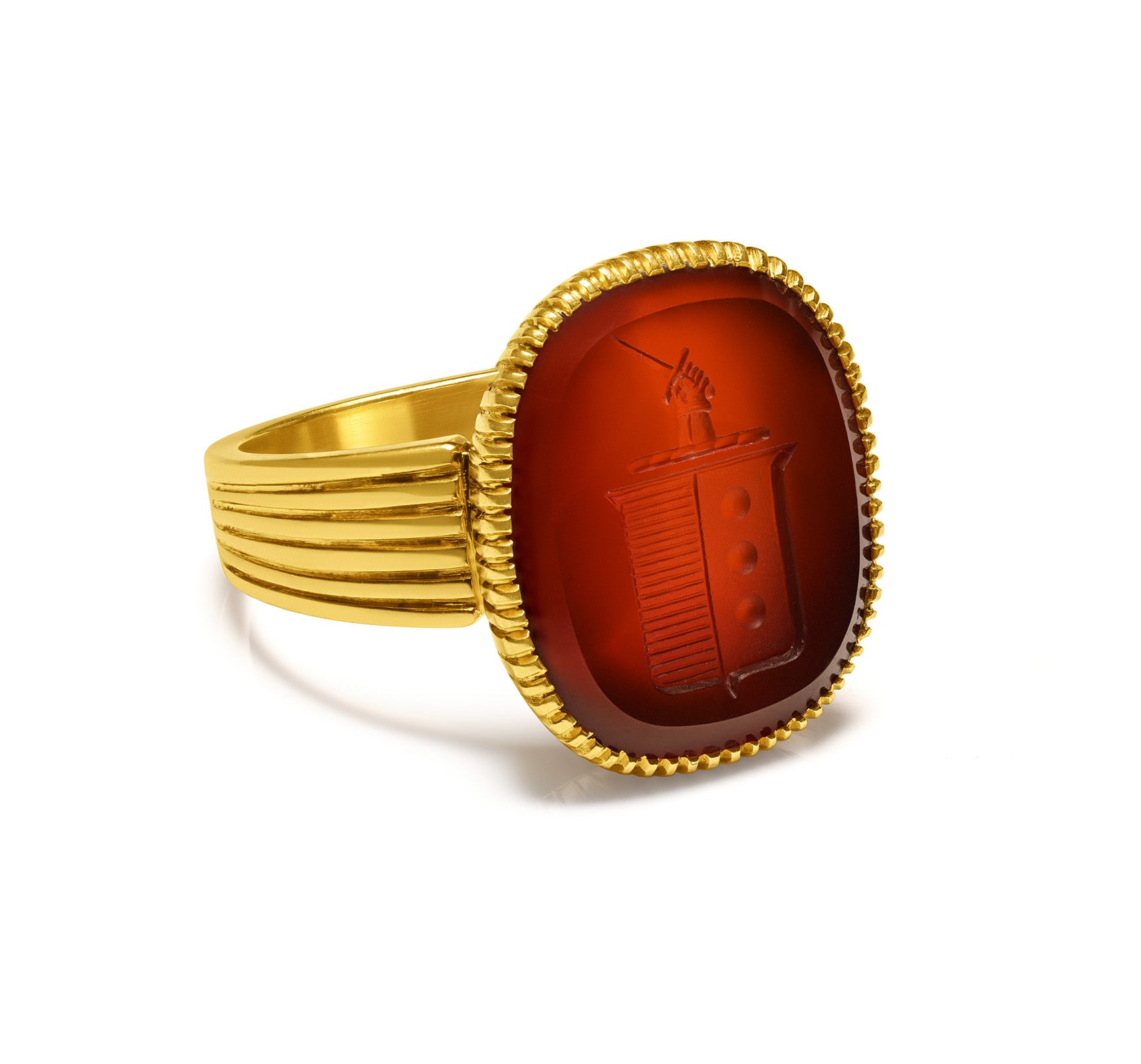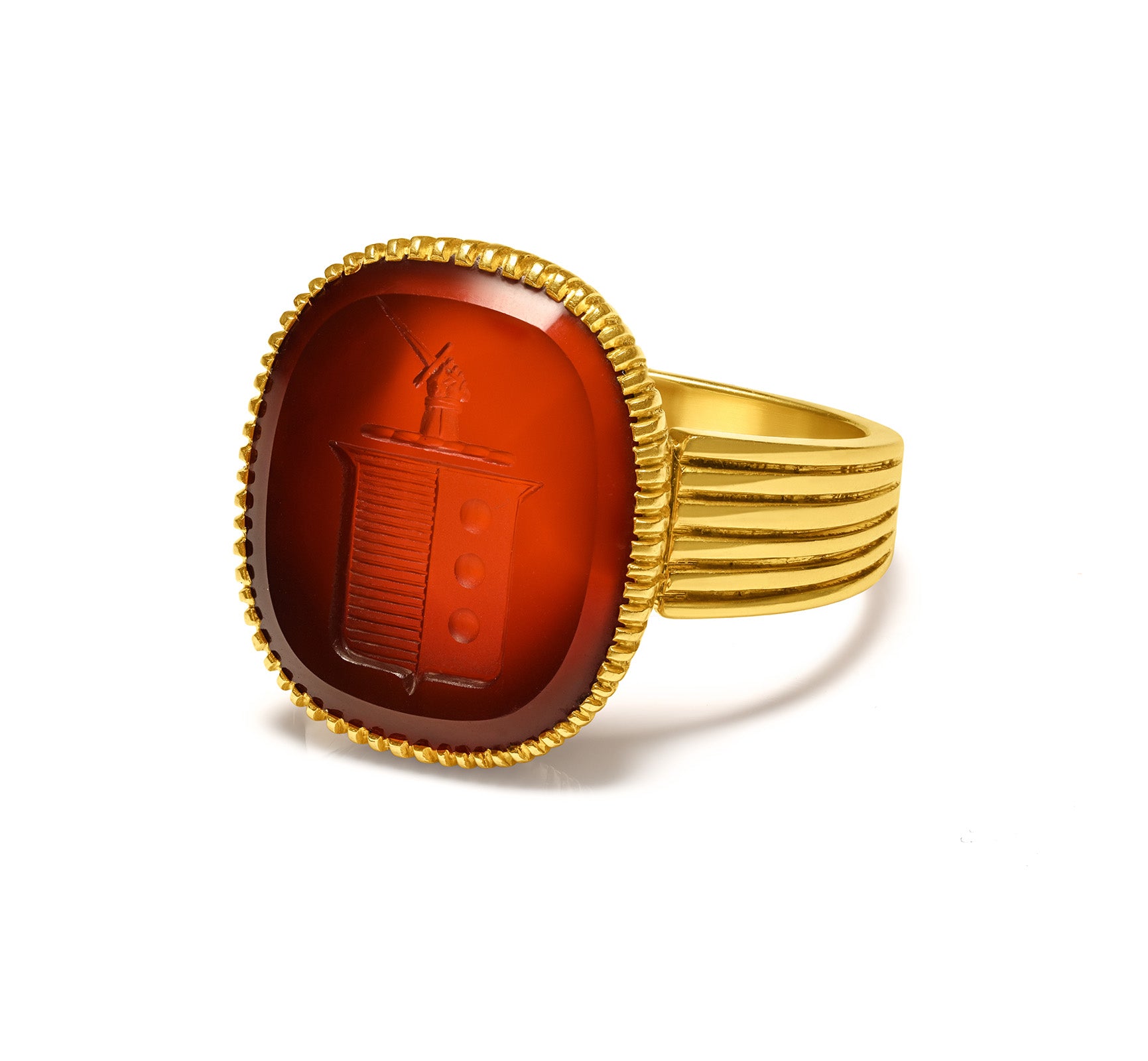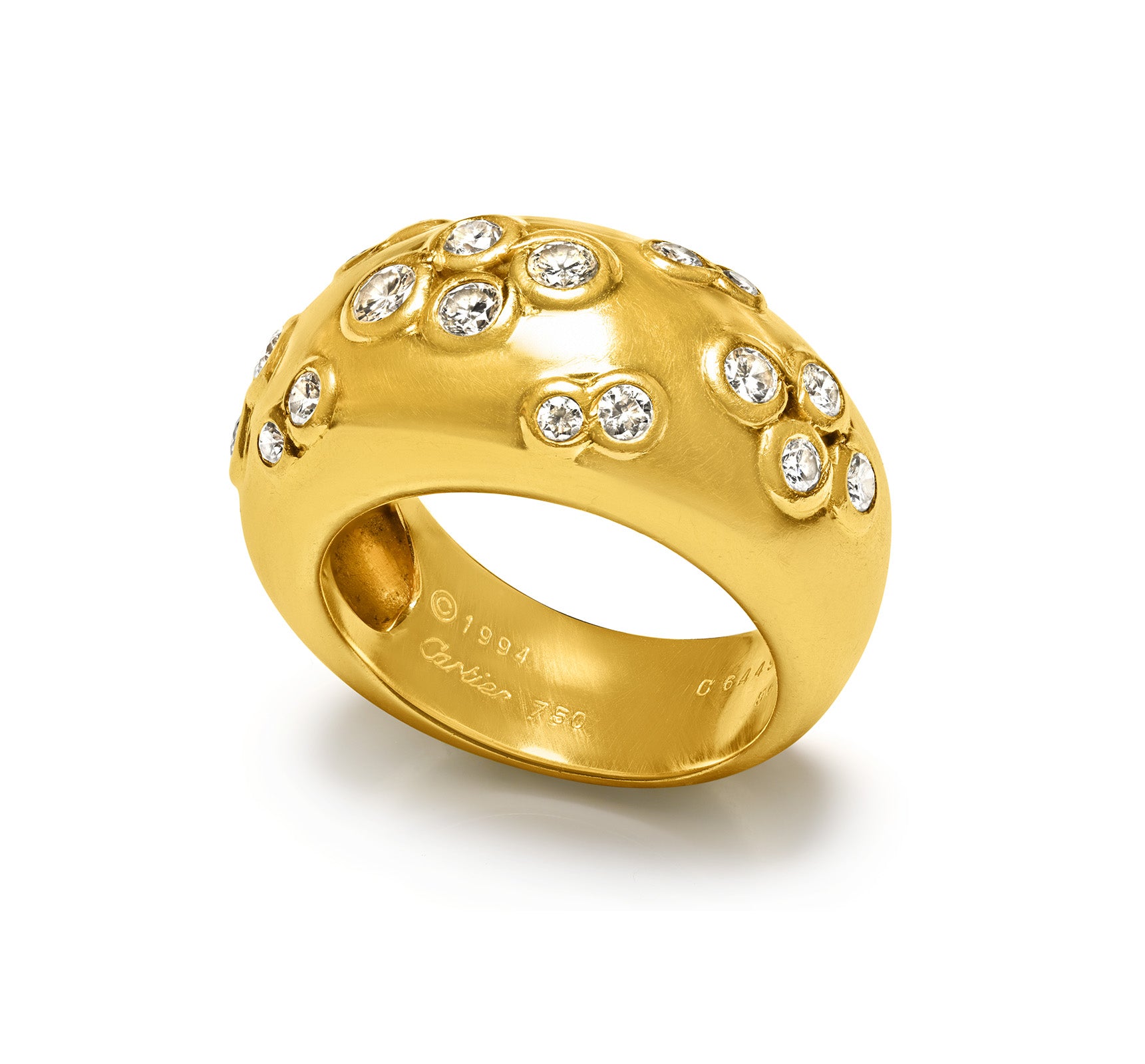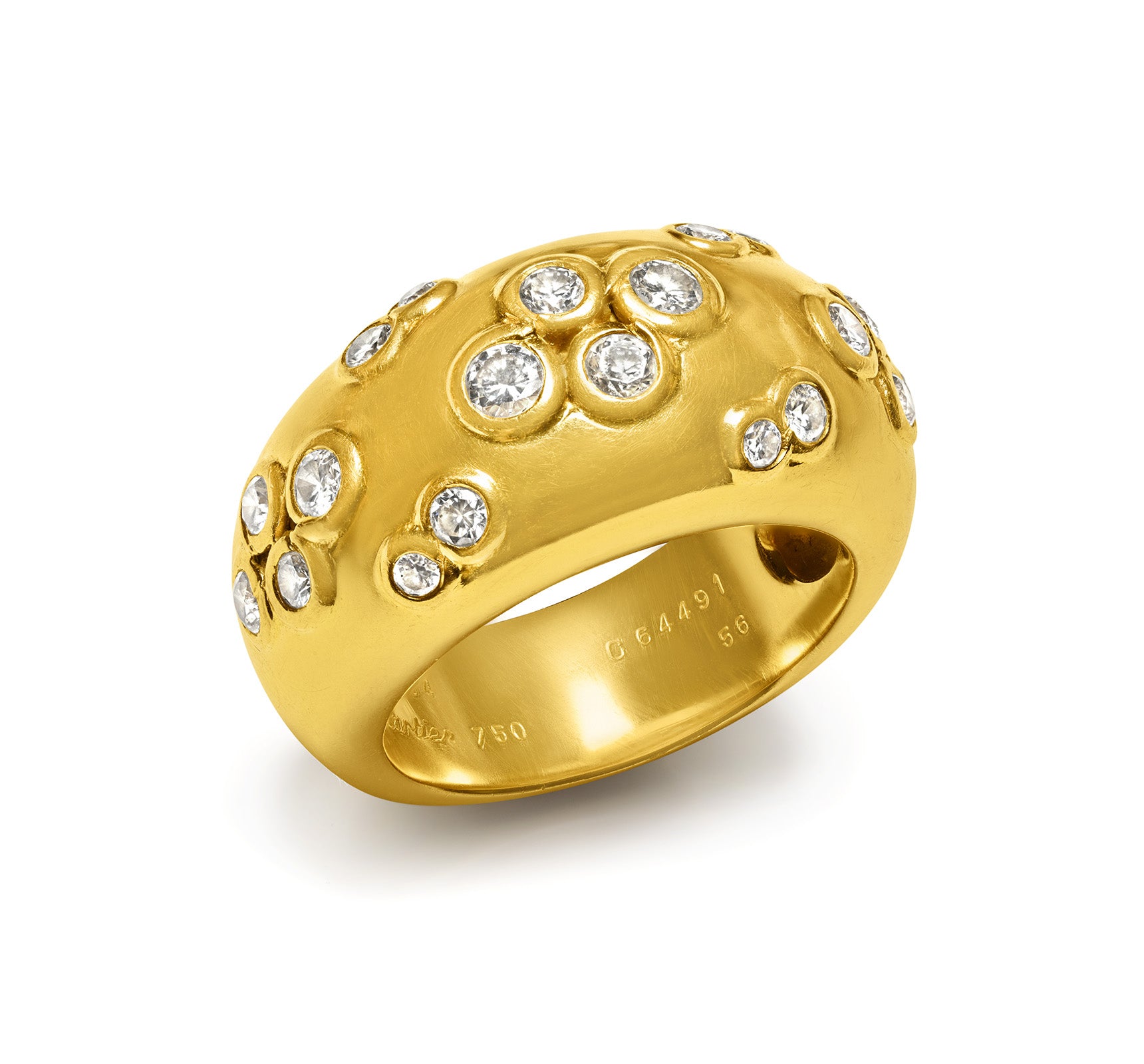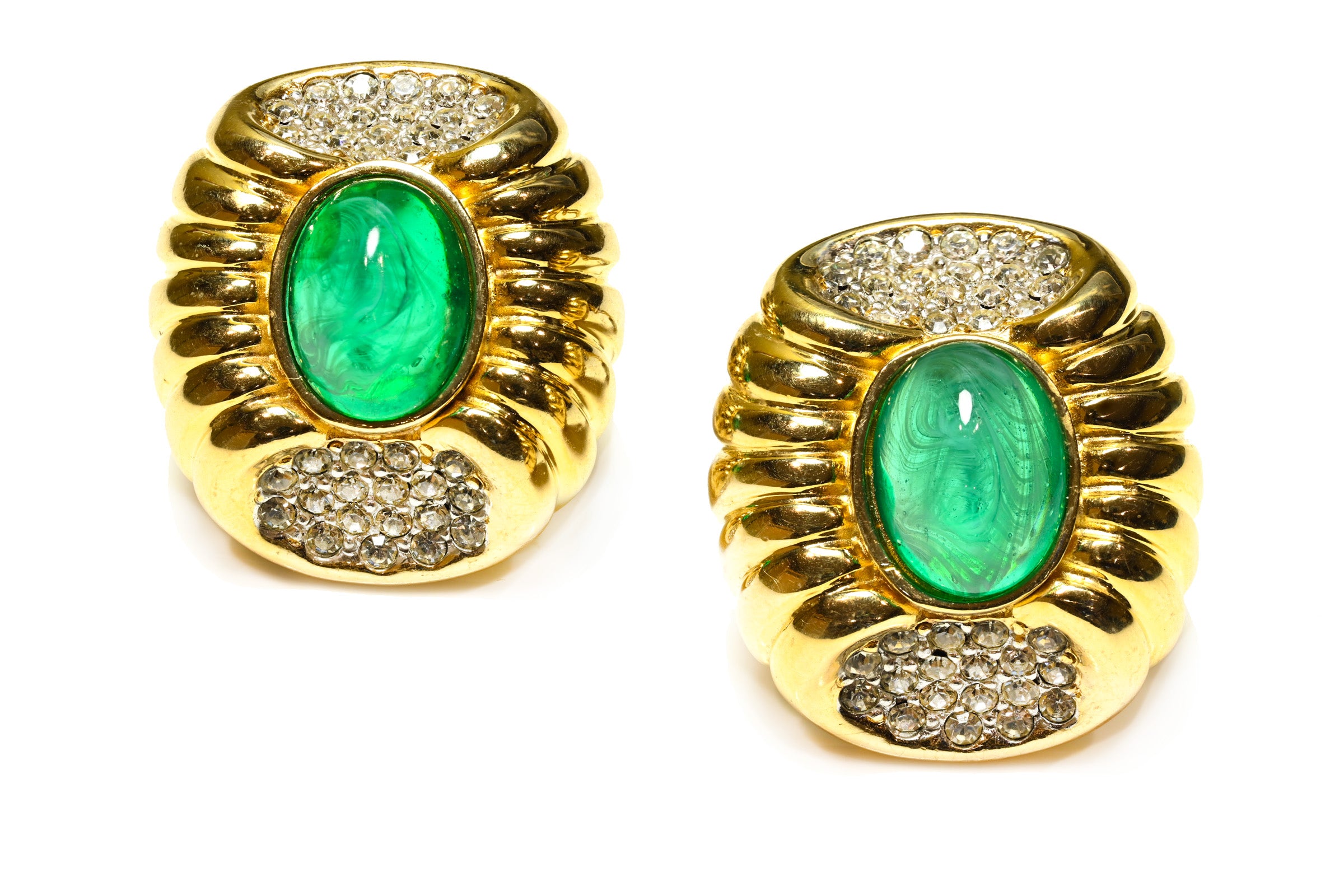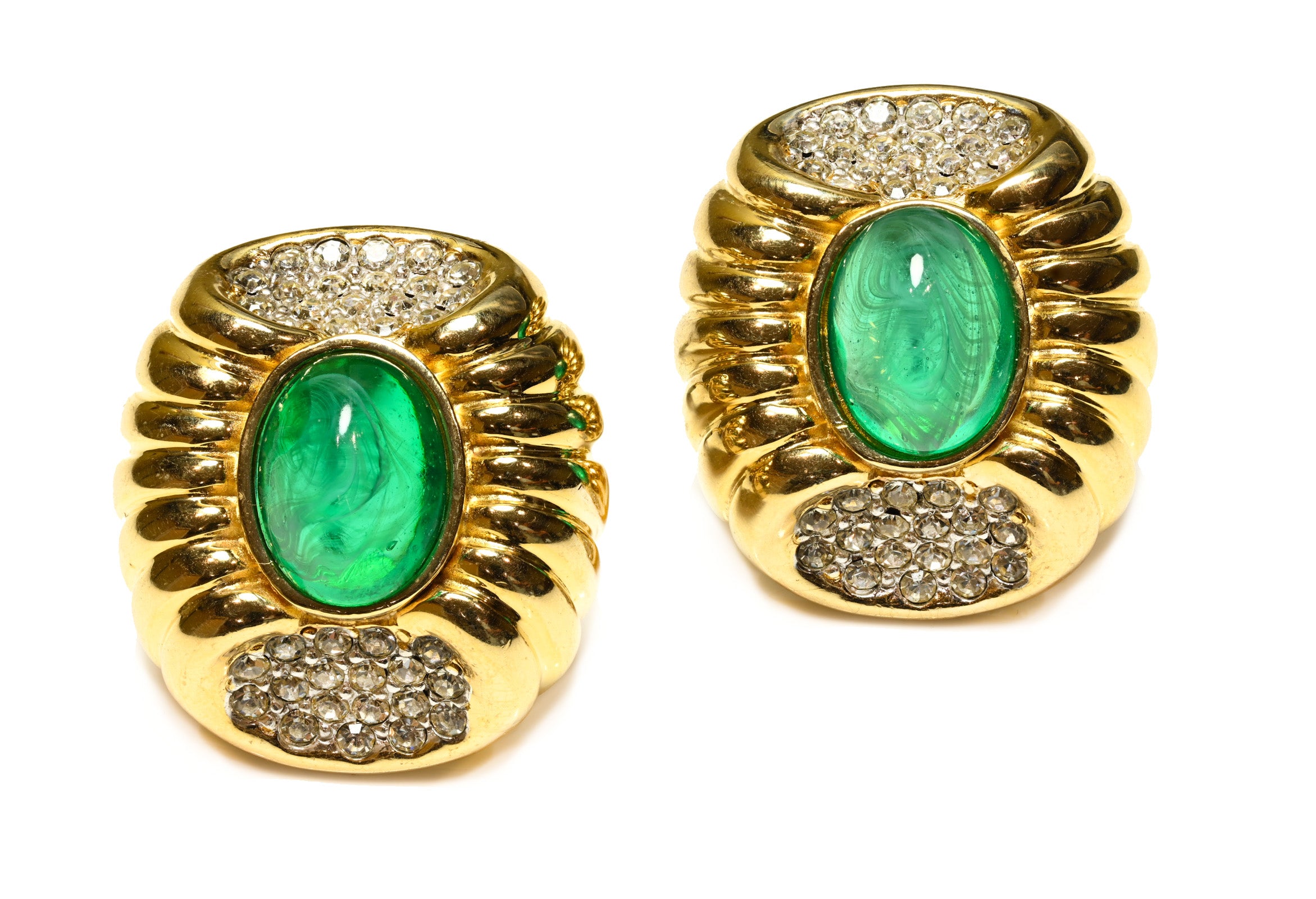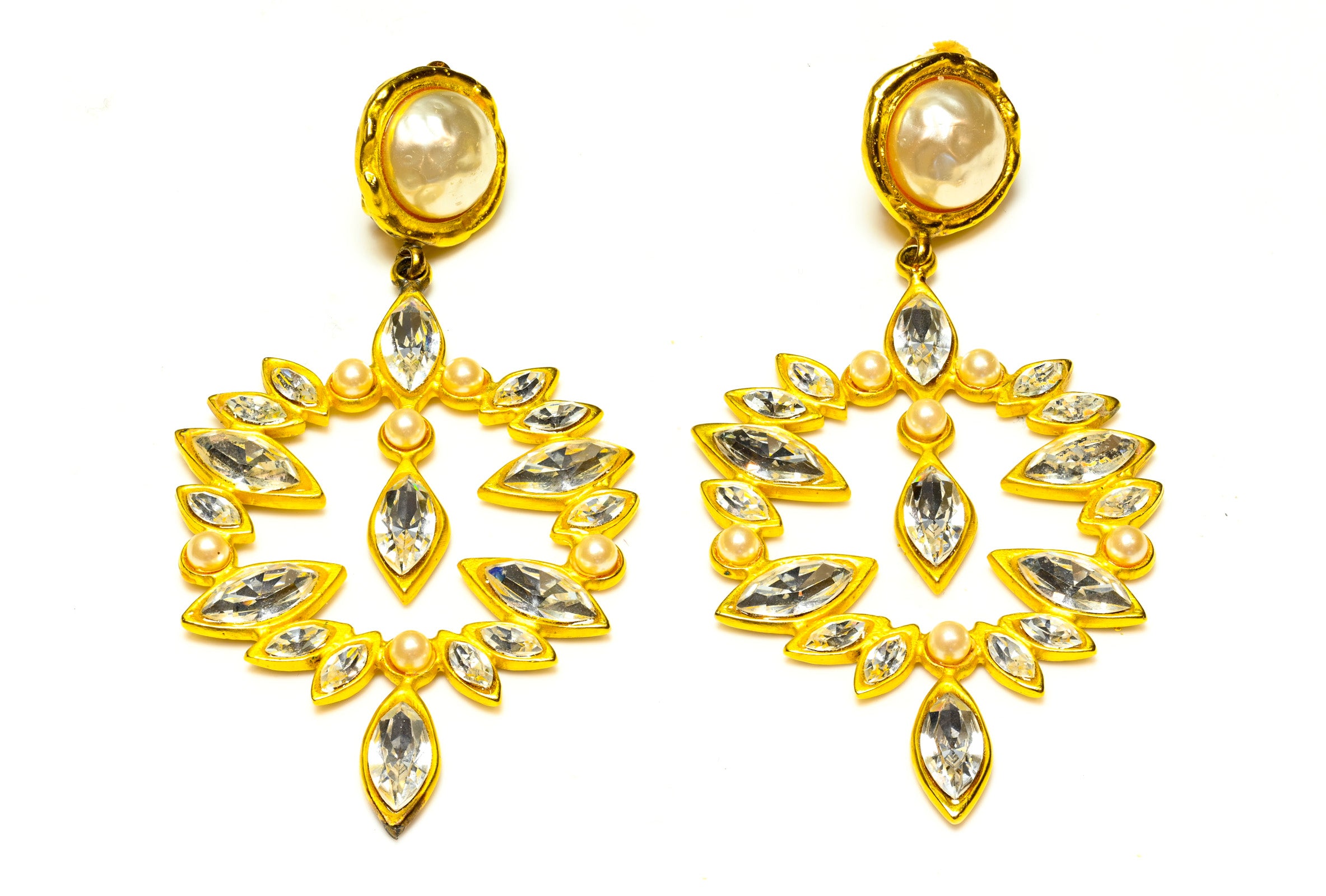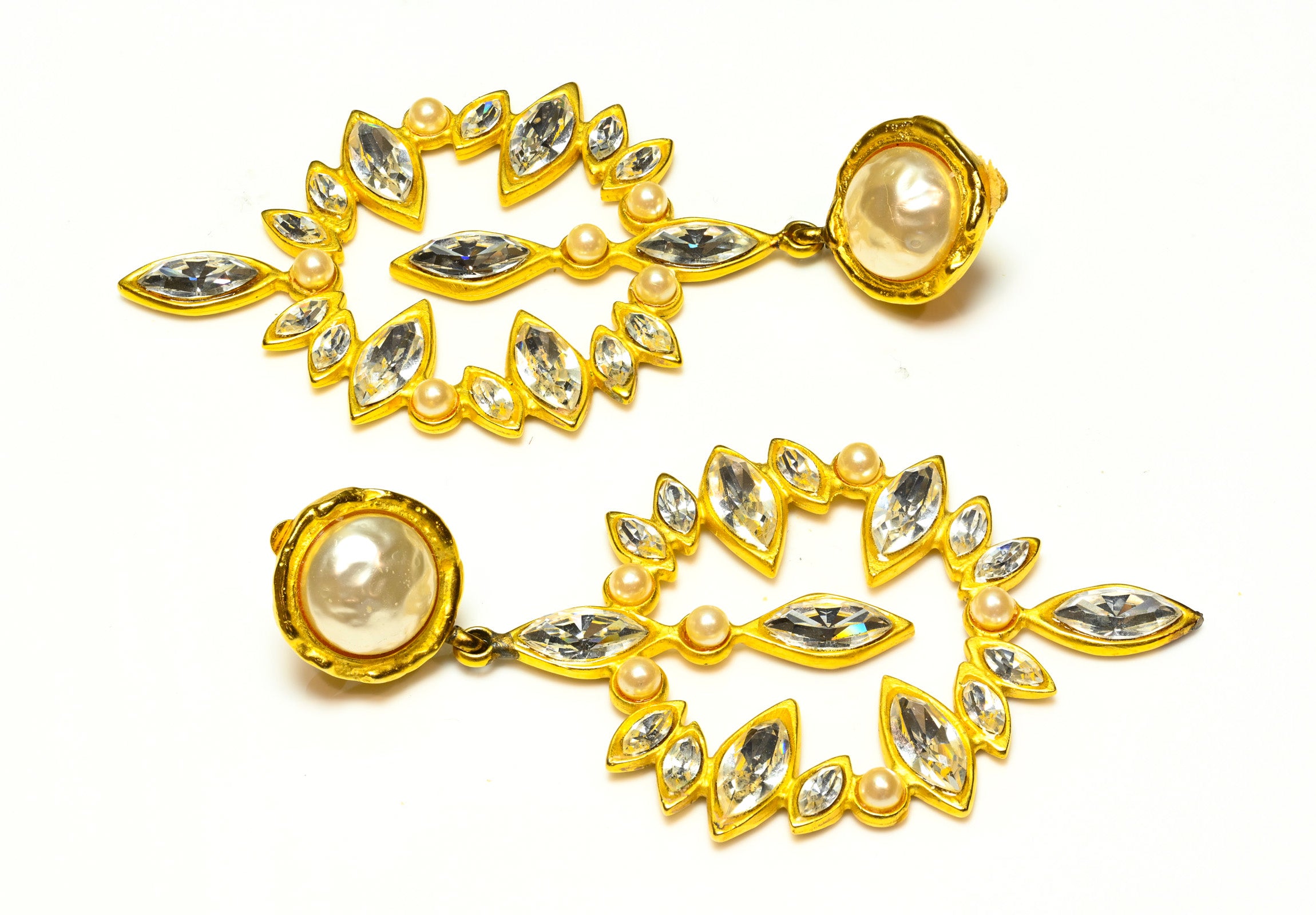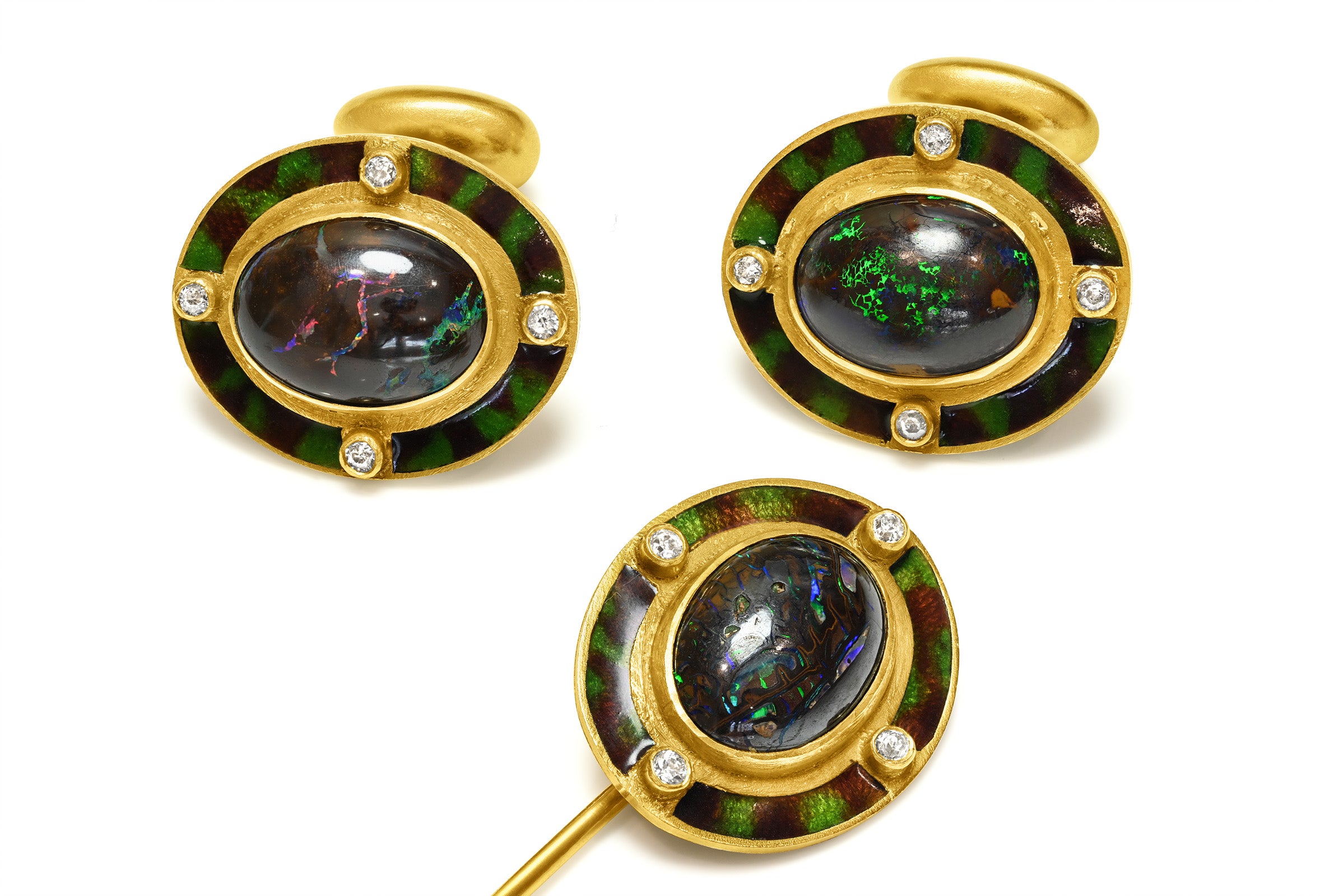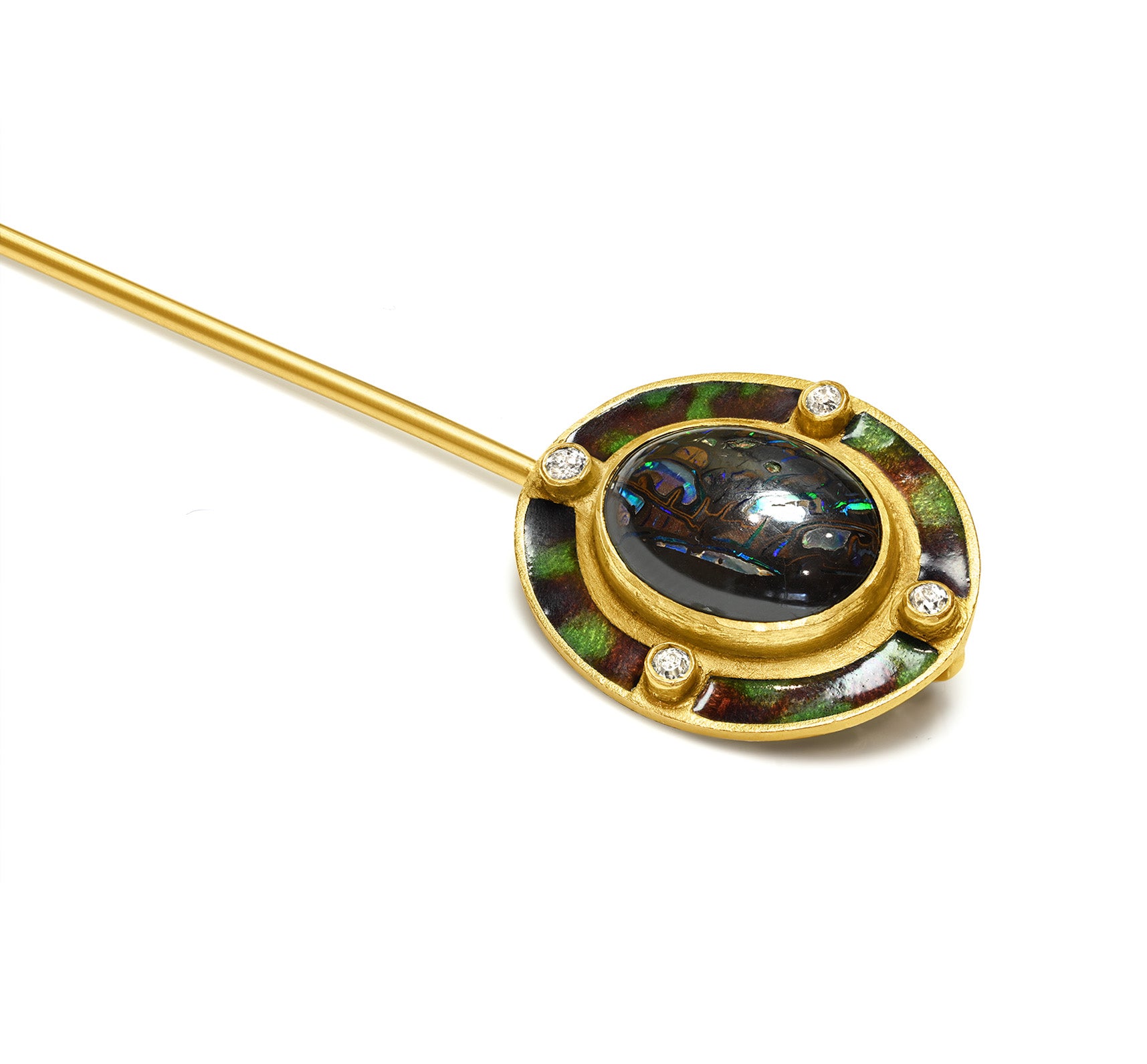
The Arts & Crafts Movement: A Revolution in Jewelry Design
Originating in the British Isles, the Arts & Crafts movement was a transformative force in the decorative and fine arts, influencing design across the British Empire, Europe, and America.
Emerging in the late 19th century, it marked a pivotal shift in society’s approach to craftsmanship, reacting against the dehumanizing effects of industrialization and the decline in artistic quality.
From jewelry to architecture, the movement reshaped the way objects were designed and made, emphasizing handcrafted artistry, natural materials, and traditional techniques. Between 1880 and 1920, Arts & Crafts flourished in Europe and North America, setting the stage for what many consider the birth of modern design.
Some scholars view it as the precursor to the Modern Style, a British interpretation of what later evolved into Art Nouveau. Others argue that, while they shared certain aesthetic sensibilities, Arts & Crafts was fundamentally opposed to Art Nouveau due to its rejection of industrial materials like iron.
The term "Arts & Crafts" was first used in 1887 by T. J. Cobden-Sanderson at a meeting of the Arts and Crafts Exhibition Society.
However, its principles had already been developing for decades, shaped by the ideas of designer William Morris, art critic John Ruskin, and historian Thomas Carlyle. In Scotland, it is closely associated with the visionary Charles Rennie Mackintosh.

Antique Arts & Crafts Kalo Shop Egyptian Revival Gold Ancient Scarab Bracelet
The Arts & Crafts Movement: Origins & Influences
The second half of the 19th century witnessed a complex interplay of historical events that led to the rise of the Arts & Crafts movement.
The earlier Industrial Revolution had sparked enthusiasm for mechanization, with mass production taking precedence over artisanal skill. Ironically, even the Royal Society of Arts encouraged this shift, awarding prizes to inventors rather than traditional artists.
The movement arose as a direct response to the perceived decline in artistic quality brought about by industrialization.
Reformers criticized mass-produced goods, believing they lacked authenticity and failed to reflect the true nature of their materials. Their concerns were reinforced by the 1851 Great Exhibition in London, where many decorative objects on display were deemed overly elaborate, inauthentic, and disconnected from traditional craftsmanship.
Instead of prioritizing efficiency and machine production, Arts & Crafts revived medieval craftsmanship, valuing the hand of the artisan over mechanized perfection. The movement sought to reconnect art with nature, using organic forms, stylized floral motifs, and materials like silver, enamel, and semi-precious stones in jewelry design.

Arts and Crafts Gold Turquoise Ring - DSF Antique Jewelry
The Arts & Crafts Movement: Reforming Design and Craftsmanship
Reform and the Roots of Change
By the mid-19th century, a growing dissatisfaction with mass production and poor craftsmanship led to a call for reform in design.
Henry Cole (1808–1882), Owen Jones (1809–1874), Matthew Digby Wyatt (1820–1877), and Richard Redgrave (1804–1888) were among the earliest reformers, advocating for a return to well-crafted, aesthetically refined objects.
These pioneers were among the first organizers of major design exhibitions, where they critiqued the overly elaborate and poorly constructed products of the industrial age. Their ideas formed the foundation for later movements that championed quality craftsmanship, thoughtful design, and a return to traditional artistic values.
Numerous books emerged from this period, outlining what critics saw as proper design principles—guidelines that would later inspire the philosophy of the Arts & Crafts movement.
Artistic Societies and the Rise of Craftsmanship
The Arts and Crafts Exhibition Society, established in 1888, played a crucial role in promoting these ideals. Its first annual exhibition showcased pieces meant to elevate both the intellectual and social status of crafts such as furniture, metalwork, textiles, and ceramics.
For many years, these exhibitions were the only major public showcases for the decorative arts in Britain. They significantly influenced public perception, shifting attention from mass-produced goods to handcrafted objects of true artistic value.
While commonly referred to as a singular movement, Arts & Crafts was actually a network of artistic societies and workshops.
Some of the most notable groups included:
- The Arts and Crafts Exhibition Society (founded in 1888)
- The Art Workers Guild (founded in 1884)
-
Independent workshops and larger manufacturers who embraced handcrafted production

Kalo Shop Arts & Crafts Antique Egyptian Revival 14K Gold Ancient Scarab Ring - DSF Antique Jewelry
The Revival of Medieval Craftsmanship
The movement’s strongest advocates, John Ruskin and William Morris, championed a return to the Medieval guild system, where artisans were highly skilled and produced objects entirely by hand.
William Morris, in particular, believed that every piece should be crafted from start to finish by a single artisan, rather than being divided into mechanical production stages. His philosophy rejected industrial standardization and emphasized artistic individuality.
As a result, Arts & Crafts jewelry drew inspiration from the Gothic and Renaissance Revival styles, featuring intricate and aesthetically refined patterns and shapes.
In response to the heavily structured Victorian mourning jewelry, Arts & Crafts designs embraced a return to nature-inspired styling, often featuring:
- Floral and foliate motifs
- Insects, shells, and organic elements
- Handcrafted metalwork over machine-cut settings
This movement not only reshaped artistic trends but also deeply intertwined social and design reform. The education and training of artisans were considered just as important as the creation of beautiful objects.

Antique Arts & Crafts Carnelian Intaglio Snake Silver Ring - DSF Antique Jewelry
A Movement Led by Architects and Visionaries
Surprisingly, many of the leading designers of the Arts & Crafts movement began their careers as architects. Their emphasis on structural beauty and functional design influenced every aspect of the movement.
One of the earliest organizations to embody these ideals was The Guild of St. George, founded by John Ruskin in 1871. The Guild encouraged a return to craftsmanship, rejecting industrial production in favor of traditional handmade techniques.
By blending artistry, social ideals, and craftsmanship, the Arts & Crafts movement reshaped the jewelry and decorative arts industries, leaving a lasting legacy of timeless beauty and impeccable craftsmanship.
The Evolution of the Arts & Crafts Movement
The Early Development and Expansion
The Arts & Crafts movement gained international attention when William Morris's designs were displayed at the 1862 International Exhibition in London. The intricate craftsmanship and revivalist aesthetic immediately captivated audiences, marking the beginning of widespread recognition.
A significant portion of the movement’s early designs was inspired by the Dictionnaire of Viollet-le-Duc, a renowned 19th-century French architect and theorist who emphasized medieval craftsmanship and structural integrity.
Morris’s reputation flourished, earning him prestigious interior design commissions for locations such as St. James’s Palace and the South Kensington Museum. However, much of his early work was focused on churches, reflecting his dedication to restoring Gothic-inspired decorative arts.
Despite being a pioneer of the movement, Morris became increasingly immersed in socialist ideals and had limited involvement in the many guilds and artistic communities that emerged in the late 19th and early 20th centuries under the banner of Arts & Crafts.

Arts & Crafts Silver Coral Chrysoprase Brooch - DSF Antique Jewelry
Arts & Crafts Across Various Art Forms
By the end of the 19th century, the influence of Arts & Crafts had expanded across multiple creative disciplines, including:
- Architecture & Interior
- Design Painting, Sculpture, & Illustration
- Bookmaking & Graphic Arts
- Photography & Stained Glass
- Textile & Leatherwork
- Embroidery, Rug Making, & Weaving
- Jewelry & Metalwork
- Enameling & Ceramics
The handmade aesthetic and emphasis on craftsmanship became highly desirable by 1910. However, as amateur artisans and mass-market imitations flooded the market, the perceived quality of Arts & Crafts products declined. Many consumers began to favor mass-produced goods for their affordability and functionality.
Simultaneously, the Arts and Crafts Exhibition Society, which had once been a hub of innovation, became more conservative, rejecting collaborations with trade and manufacturers.
Meanwhile, designers in continental Europe pushed for industrial partnerships, forming influential groups such as the Deutsche Werkbund in Germany and the Design in Industries Association in Britain.

Antique Arts & Crafts Silver & Gold Agate Flower Cufflinks - DSF Antique Jewelry
Arts & Crafts in the United States
The movement quickly spread to the United States, where British designers heavily influenced American artisans.
John Ruskin’s writings and William Morris’s designs were particularly impactful in shaping American interpretations of Arts & Crafts.
Several Arts & Crafts Societies emerged in cities like:
- Boston
- Upstate New York
- Chicago
These American adaptations of Arts & Crafts jewelry featured lighter color schemes and simplified patterns, introducing design elements such as:
- Paper-clip chains
- T-bar clasps
- Loop clasps
This more stylized and less intricate approach became distinctly American while still preserving the movement’s core principles of craftsmanship and artistry.

Antique Arts & Crafts Yellow Gold Fish Cufflinks - DSF Antique Jewelry
Arts & Crafts in Japan: The Mingei Movement
In Japan, the Arts & Crafts philosophy took shape as the Mingei movement during the 1920s. Inspired by traditional Japanese craftsmanship, this movement sought to preserve folk art and handcrafted techniques in the face of increasing industrialization.
The Mingei movement shared key principles with Arts & Crafts, including:
- Anti-industrial values
- Emphasis on handmade objects
- Promotion of social and economic transformation
For decades, Japanese artisans played a major role in influencing European design, as many Western artists were captivated by Japanese aesthetics. However, by the 1930s, Modernism began to surpass the influence of Arts & Crafts, though its legacy persisted in design, urban planning, and craftsmanship.
Arts & Crafts Jewelry: The Beauty of Handcrafted Simplicity
Luxury Without Excess
Despite the movement's focus on handcrafted items and the use of low-cost materials, Arts & Crafts jewelry remained largely inaccessible to the general public. The level of expertise and craftsmanship required to create these intricate pieces meant they were still highly valued and sought after, making them relatively expensive.
However, by the late 19th century, several prominent silver producers and merchants recognized that the simplistic yet artistic designs had mass appeal. As a result, efforts were made to create more affordable pieces while maintaining the movement’s core values.
The design philosophy of Arts & Crafts jewelry had a lasting impact, influencing late 20th-century jewelry trends, particularly in the 1970s, which saw a resurgence of earthy color palettes, handmade aesthetics, and nature-inspired motifs.

Arts & Crafts Gold Freshwater Pearl Stick Pin - DSF Antique Jewelry
The Principles of Handcrafted Jewelry
The Arts & Crafts movement rejected traditional jewelers and manufacturers, advocating for a return to medieval-style guild craftsmanship. The belief was that one artisan should create an entire piece from start to finish, ensuring that the design was valued for its artistic merit rather than the intrinsic worth of its materials.
To keep jewelry affordable and accessible, precious gemstones were rarely used. Instead, artisans focused on alternative materials, such as:
- Silver, copper, and aluminum (widely available in the late 19th century)
- Gold, typically used as a subtle accent
- Unusual "toothy" freshwater pearls
Distinctive Features of Arts & Crafts Jewelry
Unlike mass-produced Victorian jewelry, Arts & Crafts pieces were intentionally imperfect, emphasizing handmade authenticity through techniques such as:
- Hammered Textures – Silver surfaces were intentionally left with visible hammer marks, highlighting the artisan's craftsmanship rather than machine-made perfection.
- Cabochon-Cut Stones – Faceted gems were avoided, as John Ruskin preferred smooth, rounded cabochon cuts. Common stones included: moonstone, garnet, opal, turquoise, and amethyst.
- Hand-Painted Enamel – A key decorative element, often used to highlight nature-inspired themes, particularly leaves. The variety of leaf motifs was so distinctive that jewelry historians could often identify a maker based on the leaf design alone.
- Matte-Finished Enamel with Grainy Patterns – This method created organic textures, further distinguishing handmade jewelry from machine-made counterparts.
- Medieval & Renaissance Revival Motifs – Commonly seen in clasps, pendants, buckles, and necklaces, drawing inspiration from historical designs rather than the ornate, heavily decorated styles of the Victorian era.


Arts & Crafts Platinum Carved Moonstone Cherub Intaglio Diamond Ring - DSF Antique Jewelry
Inspirations of Arts & Crafts Jewelry
Arts & Crafts jewelry was more than just ornamentation—it was a statement of artistic integrity. The movement’s artisans sought to restore the dignity of handcrafted work, ensuring that every piece was a true work of art rather than a mass-produced commodity.
By embracing natural materials, visible craftsmanship, and historical influences, Arts & Crafts jewelry remains one of the most distinctive and highly valued styles in the world of antique and collectible jewelry today.
- Northern Europe, Asia, and Celtic motifs played a crucial role in shaping Arts & Crafts jewelry.
- Celtic knot designs, inspired by ancient silversmith techniques, were widely used.
- Medieval jewelry, particularly figurative enamel pendants and necklaces, served as a strong reference point.

Antique Bradley & Hubbard Slag Glass Arts & Crafts Humidor Tobacco Jar - DSF Antique Jewelry
Art Nouveau vs. Arts & Crafts: A Tale of Two Movements
While Art Nouveau and Arts & Crafts jewelry share some visual similarities, they are fundamentally distinct movements with different philosophies and artistic goals.
Key Differences
Handcrafted vs. Machine-Assisted
The Arts & Crafts movement insisted that all jewelry be made by hand, emphasizing the artistic integrity of craftsmanship. In contrast, Art Nouveau allowed for machine-assisted production, as long as the final result retained fluidity and organic elegance.
Simplified vs. Detailed Natural Motifs
Arts & Crafts jewelry depicted nature in its raw simplicity, favoring stylized, understated forms. Art Nouveau, however, portrayed the natural world in meticulous detail, featuring highly sensual, curving lines and intricate ornamentation.
Lighter & Subdued vs. Sensuous & Elegant
Without the sensuous elements of Art Nouveau, Arts & Crafts jewelry was lighter and simpler. Its designs emphasized functionality and restraint, in contrast to the luxurious, decorative excess of Art Nouveau.
Different Historical Timelines
The Arts & Crafts movement emerged in the mid-19th century, as a response to industrialization. Art Nouveau appeared later, towards the end of the 19th century, flourishing between 1890 and 1910. 
Antique Arts and Crafts Sterling Silver Garnet Hair Comb - DSF Antique Jewelry
The Flourishing & Decline of the Arts & Crafts Movement
Peak of Popularity
Between 1880 and 1920, the Arts & Crafts movement flourished, particularly in major UK cities like: London, Birmingham, Manchester, Edinburgh, and Glasgow.
These cities provided the artistic infrastructure, wealth, and patronage necessary for the movement to gain momentum. Exhibition societies played a key role in promoting and showcasing Arts & Crafts designs to the public.
In parallel, new art schools and technical institutions encouraged the revival of traditional crafts such as calligraphy, enameling, and embroidery, ensuring that these techniques were passed down to future generations.
The Return to Rural Simplicity
Many Arts & Crafts artists rejected urban life, favoring a return to nature and rural living. This philosophy led to the establishment of workshops in picturesque locations such as:
- The Cotswolds
- The Lake District
- Sussex & Cornwall
The Movement’s Decline
Despite its strong foundations, the Arts & Crafts movement began to decline by 1914.
- The 1912 Arts & Crafts Exhibition was a financial failure, signaling trouble for the movement.
- World War I (1914-1918) shifted priorities, making handcrafted luxury items less desirable.
- Mass production became more dominant, making Arts & Crafts ideals difficult to sustain.
By the mid-20th century, Arts & Crafts jewelry was no longer a major trend, but its influence remains in modern handcrafted jewelry, ethical fashion, and minimalist design principles.
Cover Photo: William Morris - a key influence on the Arts and Crafts movement (Credit: Frederick Hollyer via Wikimedia Commons)



